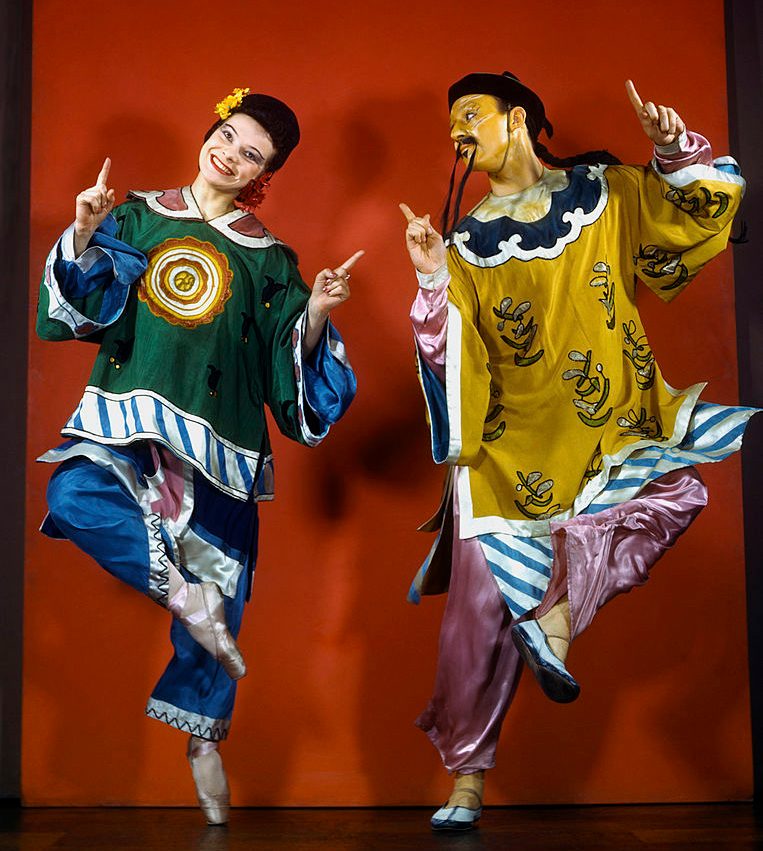To combat Asian stereotypes in ballet, Phil Chan ’06 started at the top


Phil Chan ’06 attended a performance of The Magic Flute at New York City Ballet about a decade ago. Unrelated to Mozart’s opera of the same name, the ballet, by Peter Martins, included a scene in which a Chinese servant—or a dancer dressed to look stereotypically Chinese—was shoved to the ground. Chan, who is of Chinese and German descent, was shocked and offended, both by what he saw and by the audience’s reaction: laughter. A frequent balletgoer and former dancer, he decided to take a break from watching this company, a hiatus that lasted a couple of years.
Today it’s unlikely that City Ballet would perform this scene, largely because Chan, since that dispiriting moment, has advocated for an end to such derogatory creative choices. In 2017 he joined forces with City Ballet soloist Georgina Pazcoguin to establish Final Bow for Yellowface, an initiative devoted to removing harmful Asian stereotypes from ballet repertoires everywhere. Their focus so far has been on a section of The Nutcracker—America’s most widely performed ballet—known as “Tea” or, more informally, “Chinese.” In many versions of the holiday classic, this scene has unabashedly caricatured Chinese culture, with dancers costumed in Fu Manchu mustaches, rice paddy hats, and makeup meant to imitate “Asian” features.

Unveiling the project as last year’s Nutcracker season began, Chan and Pazcoguin, who is Filipino, were overwhelmed by the response to their call for change. Nearly 50 leaders in the arts, including directors of high-profile ballet companies across the country, signed a Final Bow pledge to eliminate “outdated and offensive stereotypes of Asians (Yellowface) on our stages.” Media outlets including the New York Times, the Los Angeles Times, and National Public Radio reported their story. From Washington, D.C., to Sacramento, “Tea” got a 21st-century overhaul, with costumes, makeup, and movement revamped in the service of, as Chan puts it, “character, not caricature.”
All of this is just the beginning. Chan, who lives in Brooklyn and oversees arts programming for the networking group IVY, is thinking broadly about Final Bow’s potential impact. “How might this be a model for change?” he says. Could transformation in the realm of The Nutcracker—and the grassroots way it came about—carry over into other art forms and industries?
In reflecting on their work so far, Chan sees that he and Pazcoguin tapped into an effective strategy for disrupting the status quo that could be applicable beyond ballet. He stresses that they didn’t start the conversation about stereotypes, but “merely consolidated a lot of conversations already happening” by harnessing the power of people at the top of their field.
“We realized that we didn’t have to get hundreds of thousands of people to sign the Final Bow pledge,” he says. “We just needed to change the minds of one or two people who are leaders in the space, and then create a trickle-down effect.”

The first of those leaders turned out to be Peter Martins, formerly the head of City Ballet. Martins had received numerous letters from audience members objecting to insensitivity in the “Tea” section of the company’s Nutcracker—a cherished version choreographed by George Balanchine, a City Ballet cofounder, in 1954. Pazcoguin knew that Chan, a friend of hers, had worked with the Asian American Arts Alliance and might have ideas about modifications. At her suggestion, Martins invited him to meet.
The two had a frank conversation in which, Chan recalls, they discussed how Asians historically have been (mis)represented in American popular media, relative to events like the Chinese Exclusion Act, Japanese internment, and the Vietnam War. Chan also shared his painful experience of watching Martins’s Magic Flute.
“I think in that moment he really got it,” Chan says. “He looked me in the eye and he gave me a hug. He was like, ‘I’m sorry. I hear you. We won’t make that mistake again.’”
As the meeting ended, it was clear to Chan that Martins was willing to alter Balanchine’s hallowed Nutcracker and, indeed, the next time City Ballet performed “Tea,” it looked markedly different. Chan remembers thinking: “If Martins is willing to change the gold standard of The Nutcracker, why not everybody else?” (Martins retired from City Ballet in December 2017 amid allegations of sexual harassment and verbal and physical abuse. In February, City Ballet determined the allegations were unfounded.)
Leveraging their ballet connections (Chan used to work for the ballet competition Youth America Grand Prix), he and Pazcoguin drew up their pledge and took it to the leaders of well-known companies like the Washington Ballet, Dance Theatre of Harlem, Pacific Northwest Ballet, and Ballet West. They used signatures from those high-profile companies to garner support from smaller troupes, then went back to larger institutions and encouraged them to follow suit.
Most recently, Chan has worked on what he describes as a “problematic production” of Cole Porter’s Anything Goes (1934), and on a restaging of George Balanchine’s first collaboration with Igor Stravinsky, Le chant du rossignol or The Song of the Nightingale (1925), which is based on a Hans Christian Andersen fairy tale.
“Our larger plan is to beef up the yellowface.org site to serve as a resource for both amateur and professional performing arts organizations,” says Chan. “We want to help people stage classic Western works in a respectful and creative way that works for a diverse 21st-century audience.”
Looking back on Final Bow’s evolution, Chan observes that he and Pazcoguin initially felt powerless to invoke change on a wide scale, but were determined to try. “This was our way of saying, okay, we can’t change a lot of the horrible things that are happening in the world, but what can we change in our corner? What’s one small thing we can make better in our neighborhood? This was it.”
The lesson for him? “We have more power than we thought.”
